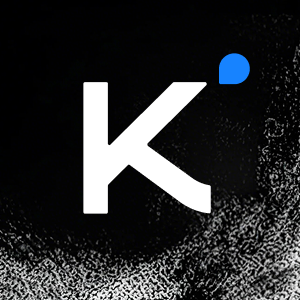GraphQL-Ruby 中可见性配置的最佳实践
2025-06-07 02:51:47作者:胡易黎Nicole
在 GraphQL-Ruby 2.4 版本中引入的可见性配置功能为 API 访问控制提供了强大的支持。本文将深入探讨如何正确使用这一功能,避免常见陷阱,并分享一些高级应用场景。
可见性配置的基本原理
GraphQL-Ruby 的可见性配置允许开发者通过预定义的"profiles"来控制不同类型用户对 schema 的访问权限。其核心思想是将访问控制逻辑从业务代码中分离出来,实现更清晰的权限管理。
基本配置示例如下:
class TestSchema < GraphQL::Schema
use GraphQL::Schema::Visibility, profiles: {
public: { public: true },
internal: { internal: true },
}
end
常见问题与解决方案
1. 上下文与配置的混淆
开发者常犯的一个错误是混淆了请求上下文(context)和可见性配置(profile)的关系。在默认情况下,可见性检查会同时考虑两者:
class PublicType < GraphQL::Schema::Object
def self.visible?(context)
super && (context[:internal] || context[:public])
end
end
这种实现方式容易导致不可预期的行为,特别是当请求上下文与可见性配置不一致时。
2. 预加载(preload)的影响
当启用preload: true选项时,系统会缓存可见性配置,这可能导致与请求上下文的预期行为不符:
use GraphQL::Schema::Visibility, preload: true, profiles: {
public: { public: true },
internal: { internal: true },
}
最佳实践建议
1. 明确区分静态配置与动态上下文
推荐的做法是在可见性检查中明确区分静态配置和动态上下文:
class Widget < GraphQL::Schema::Object
def self.visible?(context)
super && begin
if (profile_settings = context.visibility_profile_settings)
profile_settings[:internal]
else
context[:api_client].beta_enabled?(:my_beta_flag)
end
end
end
end
2. 合理使用动态可见性
对于需要根据运行时条件控制可见性的场景,可以结合使用动态可见性:
class DynamicType < GraphQL::Schema::Object
def self.visible?(context)
super && context[:api_client].beta_enabled?(:feature_flag)
end
end
高级应用场景
1. 灰度发布控制
通过可见性配置可以实现精细的灰度发布控制:
profiles: {
beta: {
feature_a: true,
feature_b: false
},
production: {
feature_a: true,
feature_b: true
}
}
2. 多租户隔离
在多租户系统中,可以利用可见性配置实现数据隔离:
class TenantAwareType < GraphQL::Schema::Object
def self.visible?(context)
super && context[:current_tenant] == allowed_tenant
end
end
总结
GraphQL-Ruby 的可见性配置功能为 API 权限管理提供了强大而灵活的工具。通过遵循本文介绍的最佳实践,开发者可以构建出既安全又易于维护的 GraphQL API。关键点在于明确区分静态配置与动态上下文,合理设计可见性检查逻辑,并根据实际需求选择适当的配置方式。
登录后查看全文
热门项目推荐
相关项目推荐
 AutoGLM-Phone-9BAutoGLM-Phone-9B是基于AutoGLM构建的移动智能助手框架,依托多模态感知理解手机屏幕并执行自动化操作。Jinja00
AutoGLM-Phone-9BAutoGLM-Phone-9B是基于AutoGLM构建的移动智能助手框架,依托多模态感知理解手机屏幕并执行自动化操作。Jinja00 Kimi-K2-ThinkingKimi K2 Thinking 是最新、性能最强的开源思维模型。从 Kimi K2 开始,我们将其打造为能够逐步推理并动态调用工具的思维智能体。通过显著提升多步推理深度,并在 200–300 次连续调用中保持稳定的工具使用能力,它在 Humanity's Last Exam (HLE)、BrowseComp 等基准测试中树立了新的技术标杆。同时,K2 Thinking 是原生 INT4 量化模型,具备 256k 上下文窗口,实现了推理延迟和 GPU 内存占用的无损降低。Python00
Kimi-K2-ThinkingKimi K2 Thinking 是最新、性能最强的开源思维模型。从 Kimi K2 开始,我们将其打造为能够逐步推理并动态调用工具的思维智能体。通过显著提升多步推理深度,并在 200–300 次连续调用中保持稳定的工具使用能力,它在 Humanity's Last Exam (HLE)、BrowseComp 等基准测试中树立了新的技术标杆。同时,K2 Thinking 是原生 INT4 量化模型,具备 256k 上下文窗口,实现了推理延迟和 GPU 内存占用的无损降低。Python00 GLM-4.6V-FP8GLM-4.6V-FP8是GLM-V系列开源模型,支持128K上下文窗口,融合原生多模态函数调用能力,实现从视觉感知到执行的闭环。具备文档理解、图文生成、前端重构等功能,适用于云集群与本地部署,在同类参数规模中视觉理解性能领先。Jinja00
GLM-4.6V-FP8GLM-4.6V-FP8是GLM-V系列开源模型,支持128K上下文窗口,融合原生多模态函数调用能力,实现从视觉感知到执行的闭环。具备文档理解、图文生成、前端重构等功能,适用于云集群与本地部署,在同类参数规模中视觉理解性能领先。Jinja00 HunyuanOCRHunyuanOCR 是基于混元原生多模态架构打造的领先端到端 OCR 专家级视觉语言模型。它采用仅 10 亿参数的轻量化设计,在业界多项基准测试中取得了当前最佳性能。该模型不仅精通复杂多语言文档解析,还在文本检测与识别、开放域信息抽取、视频字幕提取及图片翻译等实际应用场景中表现卓越。00
HunyuanOCRHunyuanOCR 是基于混元原生多模态架构打造的领先端到端 OCR 专家级视觉语言模型。它采用仅 10 亿参数的轻量化设计,在业界多项基准测试中取得了当前最佳性能。该模型不仅精通复杂多语言文档解析,还在文本检测与识别、开放域信息抽取、视频字幕提取及图片翻译等实际应用场景中表现卓越。00 GLM-ASR-Nano-2512GLM-ASR-Nano-2512 是一款稳健的开源语音识别模型,参数规模为 15 亿。该模型专为应对真实场景的复杂性而设计,在保持紧凑体量的同时,多项基准测试表现优于 OpenAI Whisper V3。Python00
GLM-ASR-Nano-2512GLM-ASR-Nano-2512 是一款稳健的开源语音识别模型,参数规模为 15 亿。该模型专为应对真实场景的复杂性而设计,在保持紧凑体量的同时,多项基准测试表现优于 OpenAI Whisper V3。Python00 GLM-TTSGLM-TTS 是一款基于大语言模型的高质量文本转语音(TTS)合成系统,支持零样本语音克隆和流式推理。该系统采用两阶段架构,结合了用于语音 token 生成的大语言模型(LLM)和用于波形合成的流匹配(Flow Matching)模型。 通过引入多奖励强化学习框架,GLM-TTS 显著提升了合成语音的表现力,相比传统 TTS 系统实现了更自然的情感控制。Python00
GLM-TTSGLM-TTS 是一款基于大语言模型的高质量文本转语音(TTS)合成系统,支持零样本语音克隆和流式推理。该系统采用两阶段架构,结合了用于语音 token 生成的大语言模型(LLM)和用于波形合成的流匹配(Flow Matching)模型。 通过引入多奖励强化学习框架,GLM-TTS 显著提升了合成语音的表现力,相比传统 TTS 系统实现了更自然的情感控制。Python00 Spark-Formalizer-X1-7BSpark-Formalizer 是由科大讯飞团队开发的专用大型语言模型,专注于数学自动形式化任务。该模型擅长将自然语言数学问题转化为精确的 Lean4 形式化语句,在形式化语句生成方面达到了业界领先水平。Python00
Spark-Formalizer-X1-7BSpark-Formalizer 是由科大讯飞团队开发的专用大型语言模型,专注于数学自动形式化任务。该模型擅长将自然语言数学问题转化为精确的 Lean4 形式化语句,在形式化语句生成方面达到了业界领先水平。Python00
最新内容推荐
Python开发者的macOS终极指南:VSCode安装配置全攻略 Launch4j中文版:Java应用程序打包成EXE的终极解决方案 Python案例资源下载 - 从入门到精通的完整项目代码合集 TortoiseSVN 1.14.5.29465 中文版:高效版本控制的终极解决方案 MQTT客户端软件源代码:物联网开发的强大工具与最佳实践指南 TextAnimator for Unity:打造专业级文字动画效果的终极解决方案 QT连接阿里云MySQL数据库完整指南:从环境配置到问题解决 IEC61850建模工具及示例资源:智能电网自动化配置的完整指南 STM32到GD32项目移植完全指南:从兼容性到实战技巧 XMODEM协议C语言实现:嵌入式系统串口文件传输的经典解决方案
项目优选
收起
deepin linux kernel
C
24
9
OpenHarmony documentation | OpenHarmony开发者文档
Dockerfile
414
3.18 K
Nop Platform 2.0是基于可逆计算理论实现的采用面向语言编程范式的新一代低代码开发平台,包含基于全新原理从零开始研发的GraphQL引擎、ORM引擎、工作流引擎、报表引擎、规则引擎、批处理引引擎等完整设计。nop-entropy是它的后端部分,采用java语言实现,可选择集成Spring框架或者Quarkus框架。中小企业可以免费商用
Java
9
1
Ascend Extension for PyTorch
Python
228
258
暂无简介
Dart
679
160
本项目是CANN提供的数学类基础计算算子库,实现网络在NPU上加速计算。
C++
689
325
🔥LeetCode solutions in any programming language | 多种编程语言实现 LeetCode、《剑指 Offer(第 2 版)》、《程序员面试金典(第 6 版)》题解
Java
65
19
React Native鸿蒙化仓库
JavaScript
265
326
🎉 (RuoYi)官方仓库 基于SpringBoot,Spring Security,JWT,Vue3 & Vite、Element Plus 的前后端分离权限管理系统
Vue
1.21 K
660
旨在打造算法先进、性能卓越、高效敏捷、安全可靠的密码套件,通过轻量级、可剪裁的软件技术架构满足各行业不同场景的多样化要求,让密码技术应用更简单,同时探索后量子等先进算法创新实践,构建密码前沿技术底座!
C
1.03 K
492